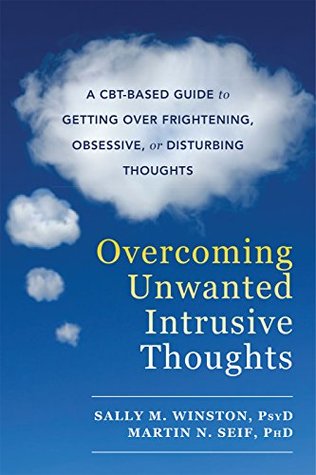More on this book
Community
Kindle Notes & Highlights
Started reading
October 4, 2019
Here is an intrusive thought that I had while writing this paragraph: I hope we lose power in this storm so I don’t have to keep working. The thought went winging by, and I made nothing of it. But here is the thing: if I were worried about my mind or my motives or my thoughts, I might be embarrassed to write this. I might worry about what the thought could mean about me. Shouldn’t I be enjoying my work? Does this mean I should retire? Am I getting burned-out? Could I be depressed if I want an excuse not to write this book? Why am I not concentrating? Do I really want to lose power? What is
...more
An unwanted intrusive thought starts as just an ordinary intrusive thought, weird, funny, or repugnant as it may be. But not wanting the thought, worrying about it, or fighting with it stops it from passing quickly. Chances are, you don’t want it because you are upset or turned off by the content. But that is just the beginning. Because you worry about it, reject it, and try to push it out of your mind, it pushes back and becomes a recurring thought or image. After a while, it starts to redirect your attention: It starts arriving with a “whoosh,” and feels awful, disgusting, or dreaded. It
...more
unwanted action. Other times, it feels impossibly stuck in your head. Your efforts to deal with it become all-encompassing and take up so much time, mental energy, and focus that your quality of life is degraded. Unwanted intrusive thoughts tend to recur repeatedly and seem to increase in intensity over time. Eventually, along with an increase in the frequency and intensity of the thoughts themselves, you might start to doubt and fear your own safety, intentions, morality, self-control, and sanity.
So we introduce you to the voices that we call “Worried Voice,” “False Comfort,” and “Wise Mind.” As you proceed through this book, we will present a variety of dialogues and commentaries involving these voices. Each of these voices sends messages that are consistent with its name. We will help you understand how best to relate to them when they pop up and intrude into your mind. Let’s start with Worried Voice, the voice of frightening imaginings. Worried Voice is the voice of “What if?” Worried Voice articulates the fears and doubts and misguided conclusions that predict tragedies and awful
...more
the illusion of rationality. But it does not ultimately silence Worried Voice. In fact, it does the opposite. False Comfort almost always triggers yet another what-if or doubt from Worried Voice. False Comfort is actually so disturbed and frightened by Worried Voice that it continuously tries to argue, control, avoid, suppress, reassure, reason with, neutralize, or work around whatever Worried Voice comes up with. False Comfort tries hard but ultimately fails to lower anxiety. It often gets angry at or ashamed of Worried Voice and wishes it would just go away. It is afraid that some of the
...more
Finally, we welcome Wise Mind, who watches the constant arguments between Worried Voice and False Comfort from afar, saying relatively little. Wise Mind is calm, unimpressed, and unaffected. It knows Worried Voice can’t help itself and that False Comfort tr...
This highlight has been truncated due to consecutive passage length restrictions.
Wise Mind demonstrates mindful compassionate awareness. Mindfulness is a state of open and active attention to the present, moment by moment. It involves the experience of observing your thoughts, feelings, and sensations without judgment or evaluation. A mindful attitude is made possible because there is a part of you that can stand back and look at your experiences—in real time—with perspective.
Helpful Fact: Observing and letting go of your commentary will go a long way toward gaining some relief from your intrusive thoughts.
So the content of unwanted intrusive thoughts is the opposite of what you want to be thinking about. It is the opposite of your values, the opposite of your wishes, and the opposite of your character. It is the opposite of you. Helpful Fact: Unwanted intrusive thoughts get stuck because you inadvertently fuel them by trying to push them away.


